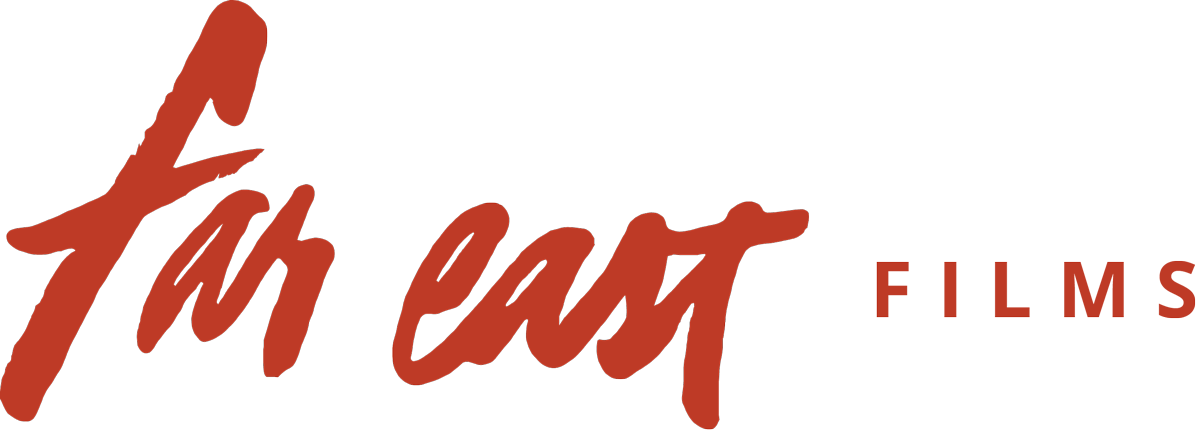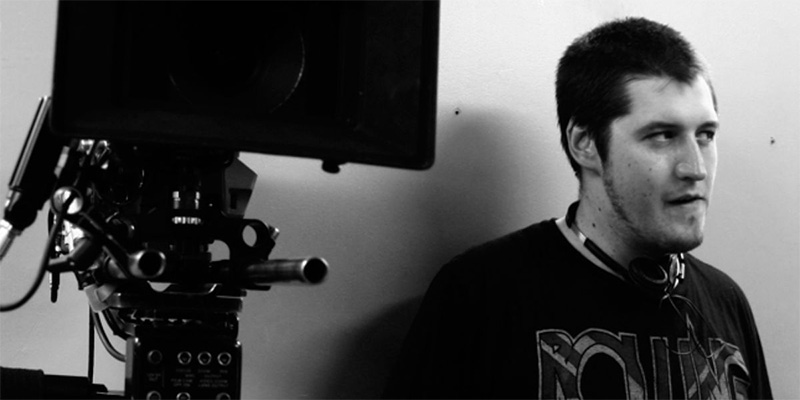In the final part of this trilogy of interviews with one of the most exciting new action film-makers around, we discuss influences, how to make low budget film-making look high-class and the art of combining martial arts and drama.
Far East Films: Tell us about ‘The Raid’…
Gareth Evans: ‘The Raid’ in comparison to ‘Merantau’ doesn’t have the same balance between the drama and the action, structurally it doesn’t demand the same amount of drama anyway to be honest. It’s kind of stripped down and we’d already introduced Silat, the tradition, with ‘Merantau’ so now we could just concentrate of modernising the choreography a bit.
FEF: Seeing an early trailer of ‘The Raid’, I was reminded a bit of the Hong Kong thriller ‘Breaking News’…
GE: It’s interesting you say that because that’s something I’ve never got around to watching…
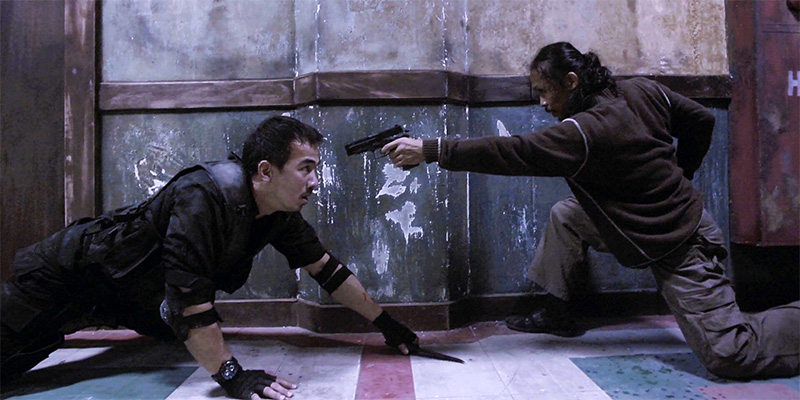
FEF: Really!? It’s a very good film.
GE: I’ve seen that first five minute shot – which is incredible – but I haven’t seen the whole thing yet. The films I drew on were ones like ‘Die Hard’, ‘Assault On Precinct 13’…
FEF: I was just about to talk about ‘Assault On Precinct 13’! One of the great thrillers, an absolute classic…
GE: It’s such a good film. One of the reasons I thought about that and ‘Escape From New York’ was that I knew I was making ‘The Raid’ on a budget. ‘Assault…’ makes you feel trapped, gives you all the terror, but without showing a hundred people attacking at one time – it’s about the camera and the use of sound. We tried to use the full soundscape to create that feeling and make it look like it cost a lot more than it actually did. I still have a lot of influence from Asian films: my use of humour is influenced by the black comedy of people like Takashi Miike and Takeshi Kitano, while the action is straight from classic 80s, early 90s Hong Kong cinema while I mix it with gunplay from people like John Woo and Sam Peckinpah. We also wanted to play around with genres a little bit so there’s influence from the horror genre to create that tension and atmosphere we needed.
FEF: So there are quite a few film-makers who have inspired you…
GE: I think so. I’ve been watching a lot of films and whether it’s conscious or not, I think film-makers tend to borrow elements from each other, from films they’ve seen. Me and my director of photography have this shorthand way of communicating – there’s a scene in ‘The Raid’ where Iko Uwais is running away from this gang and as he’s running towards this door that’s locked, I remember saying to my D.O.P. ‘I want a Sam Raimi shot here’ so then we did this tracking in shot that spiralled into a Dutch Angle. And then I would say ‘I want a ‘Shining’ shot for this…’ – a low angle shot of the door – and that’s how we would talk; we’d riff on different movies but try to find a way for it to feel organic to what we’re doing rather it just being a shameless rip.
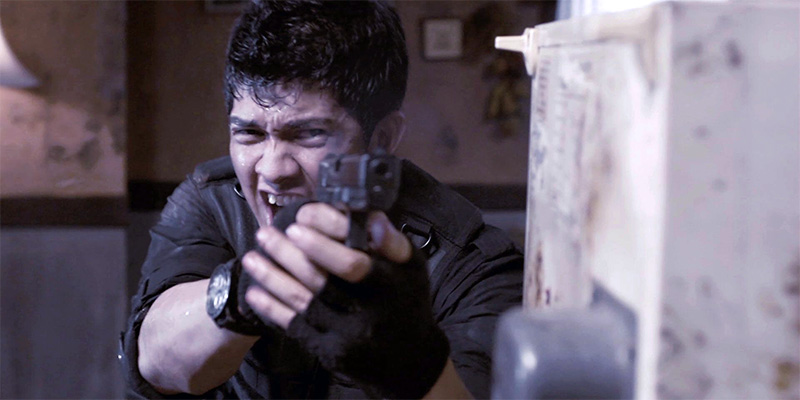
FEF: And I think Tarantino has said that’s the way he talks about camera shots and techniques…
GE: The one shot we did that I’m not sure if I’d ever seen before is during this moment when Iko is cutting through the floor and then he falls down through the hole. Then there’s a fight that takes place on the floor below and I wanted the camera to follow him down through the hole and continue to the fight in one shot. One of the reasons I thought about it was because of scheduling and budget – we didn’t have the budget for specific rigging to send the camera down, turn, twist, action… So we did this DIY version of doing it where we had two camera operators – one on the top floor, one on the bottom – and then we had the camera on a rig that’s kind of like a steering wheel. When the first camera operator passes it through he kind of twists it and the guy on the second floor is on a table below and is able to catch the camera and continue the movement. It helps it feel like one continued shot that goes through the floor and continue to the next room. On ‘Merantau’ we had cranes, dollies, steadycams etc and plenty of time, but with ‘The Raid’ we were working on a much tighter budget so we had a limit of how long we had equipment like certain rigging.
FEF: I suppose that’s the thing we take for granted when we see these big budget films where they’ve got all the equipment, all of the time.
GE: Yeah I’ve been seeing a lot of the big budget films at the cinema and I’m looking at every shot and thinking ‘they must have had a massive budget for that shot’. For ‘The Raid’ we were working within a very small budget and we really had to scrape it in within that. It’s a really difficult undertaking to do a low-budget film, but especially a low-budget action film. I suppose it’s easier on say a horror film because it’s about atmosphere, but with action we still have to compete with films from Thailand and Hong Kong so we have to be a little creative as to how we present and design the action scenes. We can’t do things like having four cars crashing into each other, we just haven’t got the budget! So instead we have four bodies crashing into one another [laughs]. It’s very tough, but rewarding in the end.
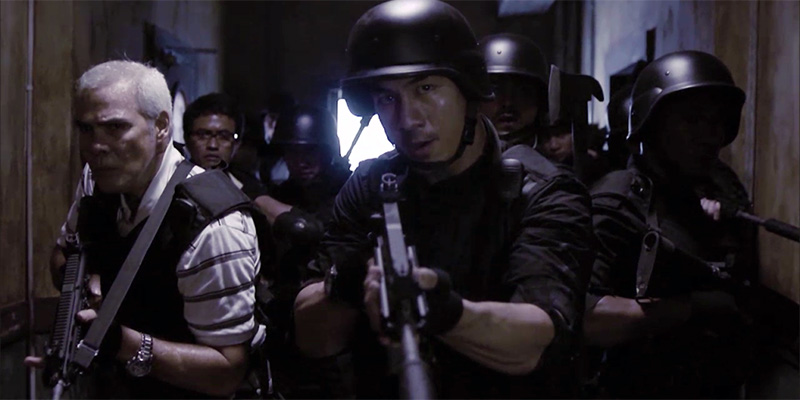
FEF: We always imagine that the choreography must be the very toughest part…
GE: Absolutely! We had this one shot we needed that was just a elbow to the back of someone’s leg and then a knee to the face – it took about forty takes to do it. It’s a nightmare for the continuity as well! Especially when you think that we shoot out of order as well. A lot of what we did was shot in a studio and we’d build these corridors etc, but we knew we’d have to shot everything we needed in that area in the first two weeks. The art department can then build the next set while we’re doing that and then so on…
FEF: It’s easy to forget when you’re watching that things aren’t usually shot in sequence…
GE: Yeah. I remember one scene in ‘Merantau’ when Iko is chasing that boy through the alleyways to get his wallet back. It starts off outside the café, goes through another alley and then they end up in the area where he sees the boy’s sister arguing with the pimp. None of those alleys are actually near each other in real life, they’re scattered over the city and the café scene itself was shot at a completely different time to the rest. If you look at this scene carefully you notice that the hairdresser was a bit over-zealous when we had to keep Iko’s hair from growing. You can see Iko’s hair get mysteriously shorter throughout the chase scene.
FEF: ‘The Raid’ looks like it’s going to be very successful…
GE: Well fingers-crossed…
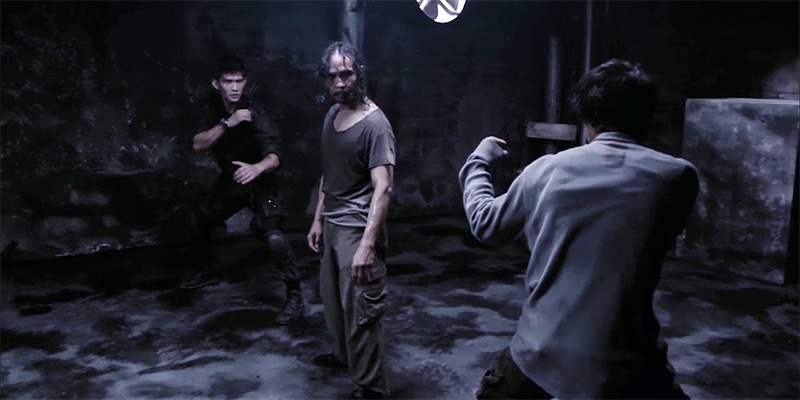
FEF: So what would you like it to lead to? How would you judge it a success?
GE: Well first and foremost we have to hope we get the investors’ money back otherwise they wont invest in the next film! That’s a key thing. All I want to do is keep making films; whether I do bigger films or carry on doing action or branch out into something else, who knows. When you finish a film you just hope people will like it and then maybe you wont have to scramble as much to make the next one. Part of the reason we did ‘The Raid’ is that it was a much smaller film and therefore easier to bankroll – we also wanted to confirm to everyone Iko’s talent and give something else for the fans. The harsh reality is that the film has to make money so we can make another one.
FEF: I hope it gets very well supported then – I’d love to see it on the big screen when it’s released in the UK. It’s not something we often get the chance to see that way and there’s definitely a snobbery about martial arts films.
GE: Yeah the definitely is. A lot of people think it’s just throwing all these kicks and punches together, but anybody can film people screaming, shouting and waving their arms around to signify action. What’s really difficult is to show escalating violence and aggression, especially if you’re not shooting in sync. We had a few people who had worked on dramas before ‘The Raid’ and have now come away with a new respect for action films, even the just the acting side of it. It’s not just punching and kicking; film-makers like Jackie Chan manage to get you on their side and that’s a really hard thing to convey take after take etc. As a genre, it deserves more respect than it gets. But then you look at the lack of respect for stuntmen – they’re not even recognised at the Oscars. It’s an incredible, brave thing they do for the film and the viewer.
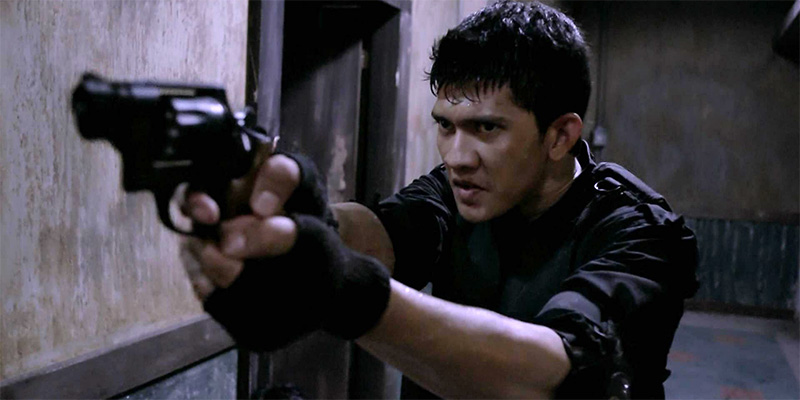
FEF: Gareth, thanks so much for talking to us…
GE: It’s been a real pleasure sir.
FEF: We wish you every success with ‘The Raid’ and after seeing the trailer have every confidence it’ll do really well.
GE: Thanks.
‘The Raid’ is available now from Amazon.com and Amazon.co.uk, and you can read the FEF review here.
Far East Films would of course like to thank Gareth for taking time out of his day to talk to us and to his wife Maya for organising things.
- Fight For Tomorrow - December 21, 2025
- Mission Kiss And Kill - December 7, 2025
- Yojimbo - November 24, 2025
